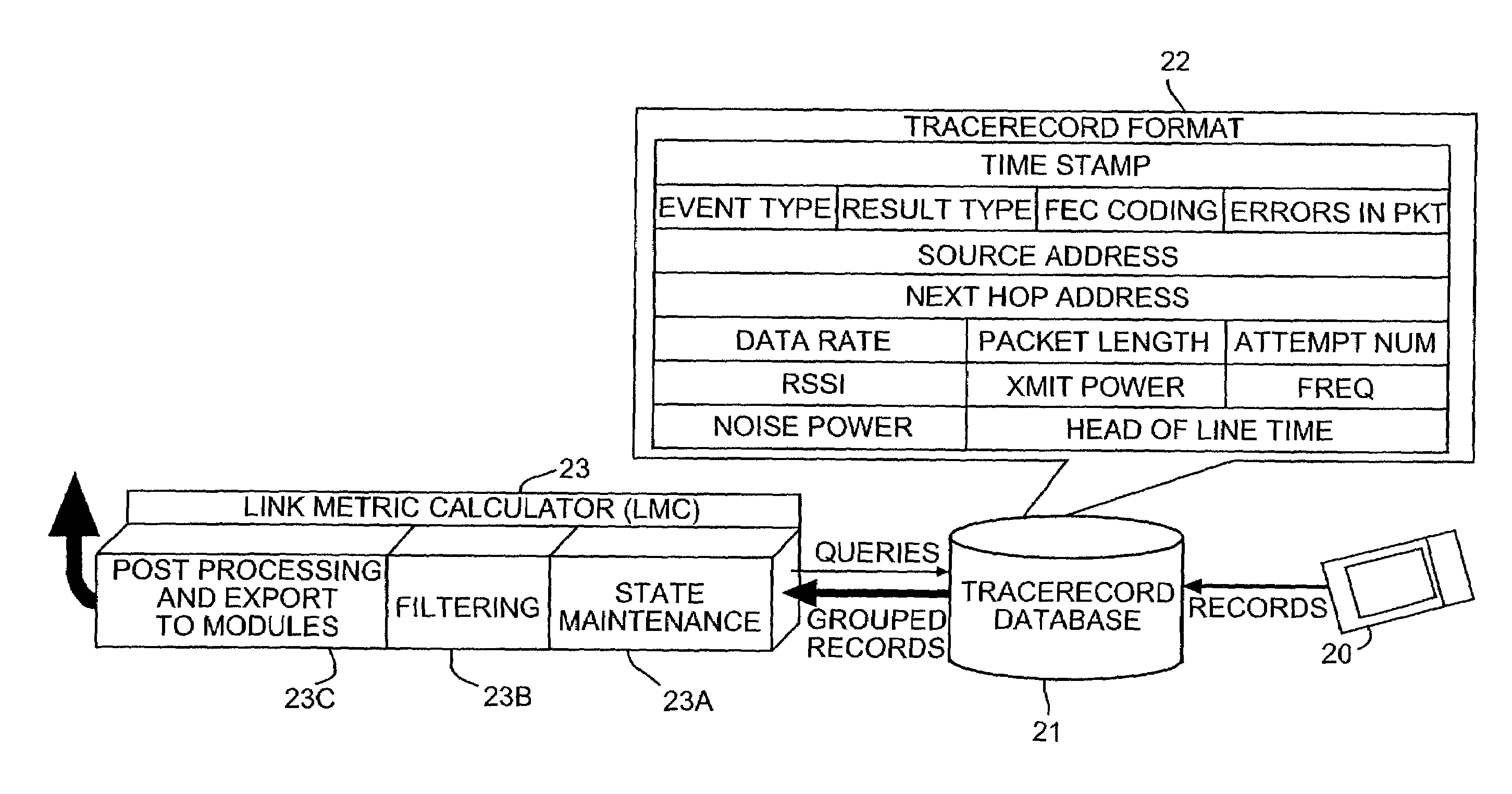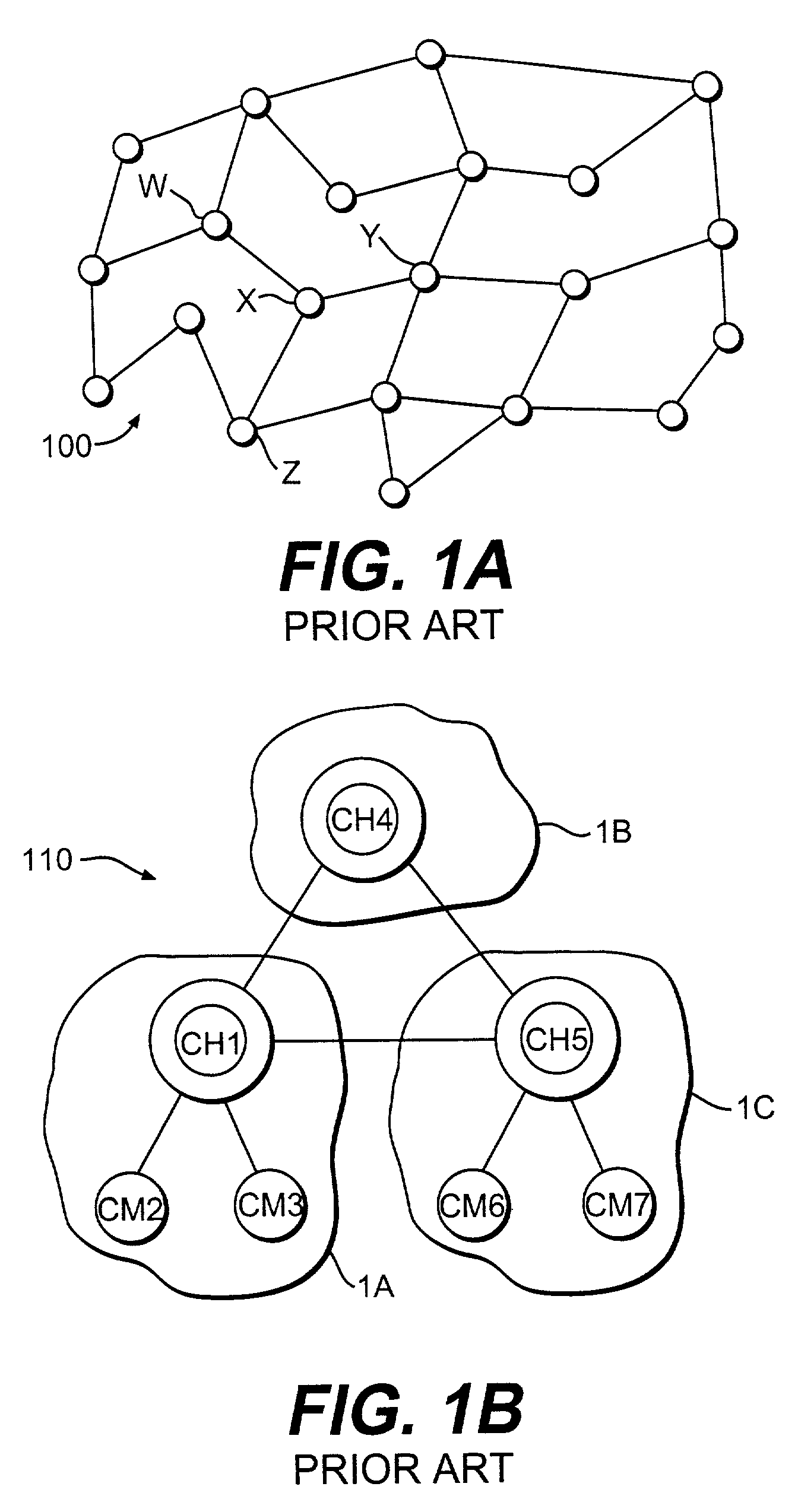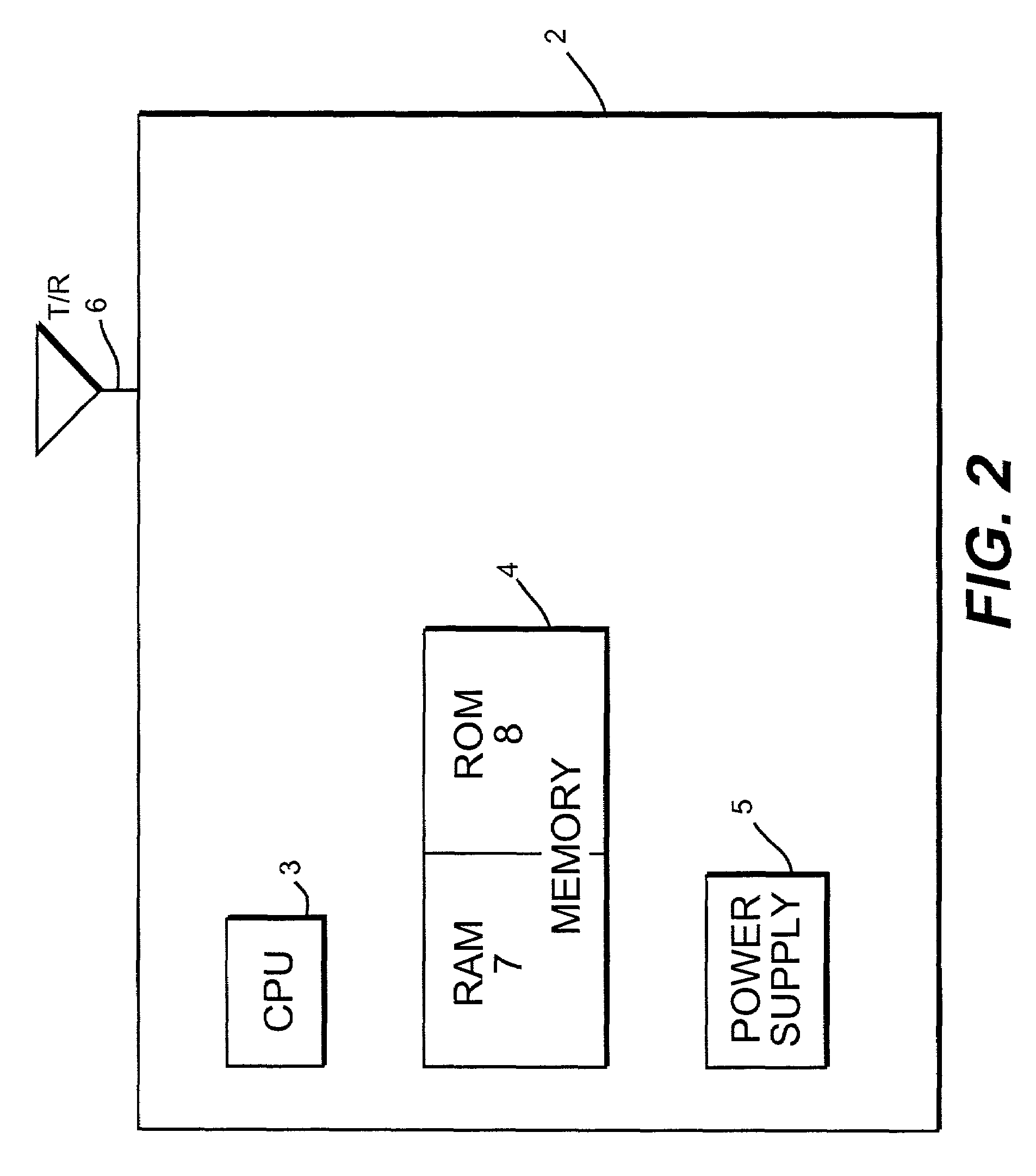Mechanism for performing energy-based routing in wireless networks
a wireless network and energy-based routing technology, applied in the field of network communication, can solve the problems of removing any advantage, difficulty in determining the amount of energy required to transmit a packet between two nodes, and transmitters usually do not know a priori what power is required
- Summary
- Abstract
- Description
- Claims
- Application Information
AI Technical Summary
Problems solved by technology
Method used
Image
Examples
Embodiment Construction
[0040]The preferred embodiments will be described with respect to a wireless communications node (specifically a “router”) and to an ad-hoc network formed by at least a plurality of similar wireless nodes. However, the present invention is not limited to only wireless ad-hoc networks, and may be applied to other networks as well.
[0041]In mobile, multi-hop wireless networks some nodes preferably act as packet routers, which can relay packets to other nodes in the network. Typically, infrastructure such as base stations or wired backbones are not required in such networks. As will be appreciated by those skilled in the art, in such ad-hoc networks, nodes discover each other, determine how to relay packets throughout the network, and maintain paths (e.g., “routes”) through the network as communication links between nodes fluctuate, disappear and reappear as the nodes move. These networks are particularly useful for communication applications requiring quick and inexpensive systems, wit...
PUM
 Login to View More
Login to View More Abstract
Description
Claims
Application Information
 Login to View More
Login to View More - R&D
- Intellectual Property
- Life Sciences
- Materials
- Tech Scout
- Unparalleled Data Quality
- Higher Quality Content
- 60% Fewer Hallucinations
Browse by: Latest US Patents, China's latest patents, Technical Efficacy Thesaurus, Application Domain, Technology Topic, Popular Technical Reports.
© 2025 PatSnap. All rights reserved.Legal|Privacy policy|Modern Slavery Act Transparency Statement|Sitemap|About US| Contact US: help@patsnap.com



